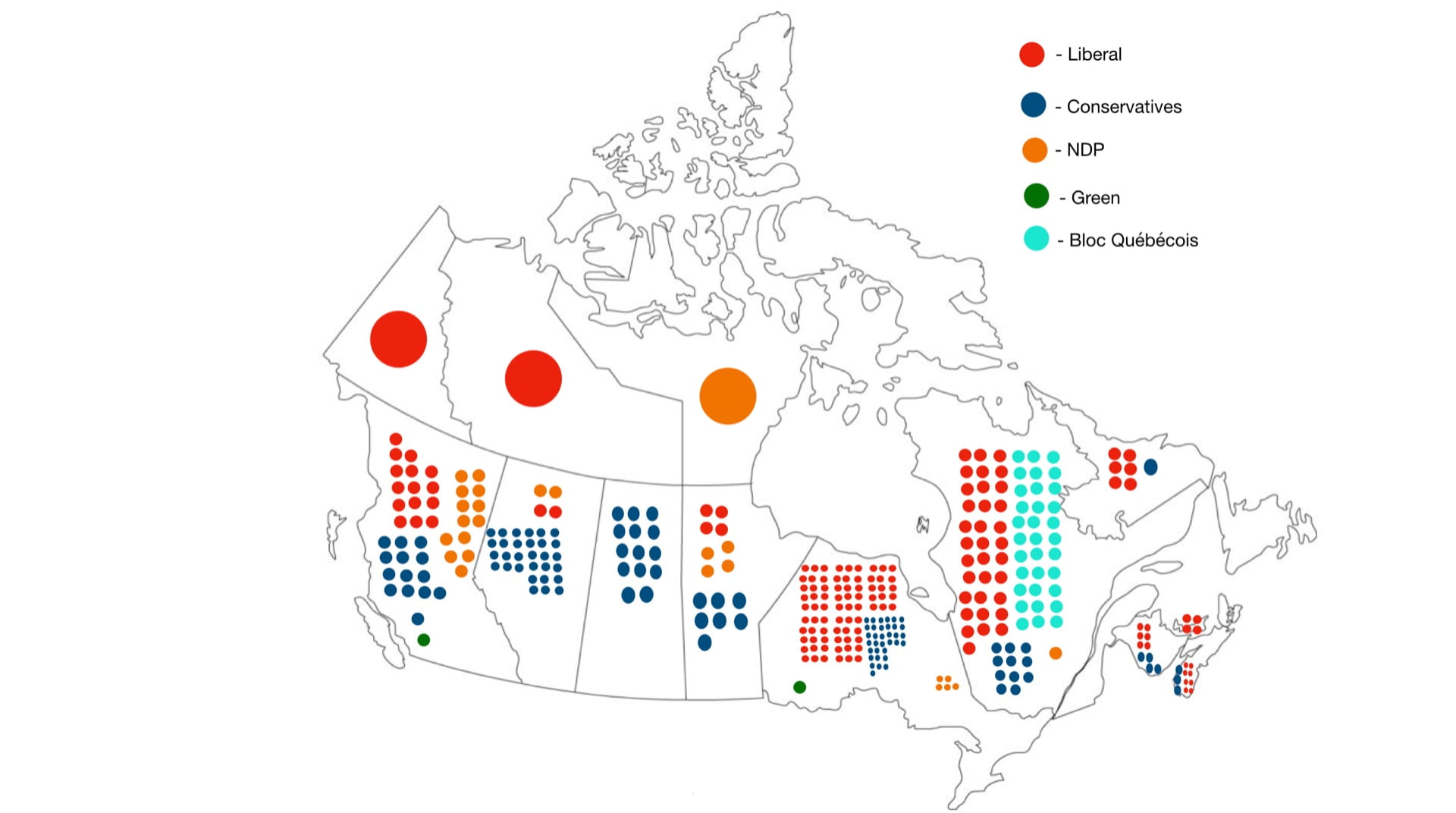Right now, a federal election has just happened in Canada. Trudeau called for an election meaning that people are putting up a sign for their preferred candidate in their riding. After looking at the results of the recent Canadian election, you can see that the Liberal party is forming another minority government. Even before this election, the Liberal party had a minorities government so not much has changed in terms of government.

Something that I found interesting that happened during this election is that the conservatives had a greater percentage of the votes than the liberal party, but we still have a liberal minority government. What does that mean and how did that come to be? Well, it’s because of the way that the Canadian electoral system works.
As you can see in this CTV news article, it’s said that the Conservative party won the popular vote with 33.7% of the vote. The liberal party had 32.6% of the vote. This isn’t the first time that this has happened either. This website, it’s shown that in the 2019 Canadian federal election, the Conservative party won 34.3% of votes. The liberal party work with 33.1% of votes but still came on top to perform a minority government. Right now, the liberal party won 159 seats. This means that they will have to form a minority government. This means that it’s harder for them to pass some of the bills that they might want to pass. This is because they have to also agree with the other candidates in the House of Commons who may have different beliefs and thoughts about some of the things the liberals want.
Before the members of parliament are decided, they need to be voted in. Canada is split into different ridings that are determined by many things such as geographic size, population, and more. This means that the size and the shape of the riding can be very different. If you want to learn more about ridings, I suggest you watch this video. Below is a map that shows all of the different seats and which parties won which seat during our 2021 Federal Election. Each one of the dots represents a seat in parliament.

The people living in the riding can vote for the candidates running in that riding. Candidates are usually associated with a certain political party, otherwise, they are independent. The candidate with the most number of votes within each riding wins. Above I’ve created a map of Canada and dots that represent the seats and partys elected in each province. If you want to know more about the election results, click here.

There are many pros and cons to our electoral system. One thing that’s good with a minority government is they’re a lot of different opinions and views from the candidates in other parties. Their views are all different and I think when making important decisions like that, it’s good to have other opinions to see who may be affected by these changes. It’s also good because even if the candidate that you voted for doesn’t get elected, there will be other candidates in the same party that will carry your same political views into the house of commons. Everyone’s voice is heard.
I think that a problem with our electoral system is that a party can still form a majority government even if they don’t receive the popular vote. When a majority is made, the party in power can set policies and create laws that get passed just because they have the majority of seats. Even if all of the other parties come together and vote against a certain policy, it can still be ruled over by the majority. I don’t think that it’s fair that one party has all of the say in the decisions that could affect a lot of people.
Overall, I think that the electoral system has parts of it that are good and bad. I think it’s somewhat unfair that winning the popular vote doesn’t mean that you form the government. Even though the Conservative party had way more votes than any other party, the liberals had the most seats. Although, right now with a minority government, I think this system is a lot better in making sure that everyone’s voice is heard.
